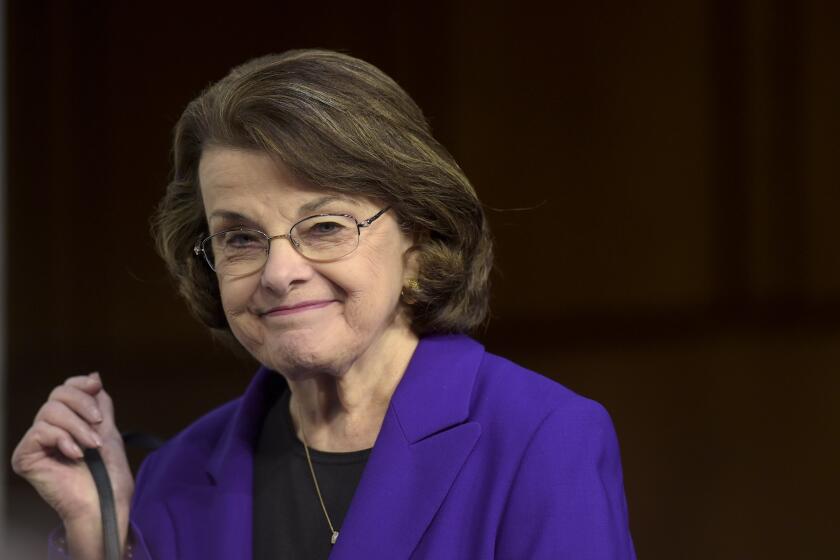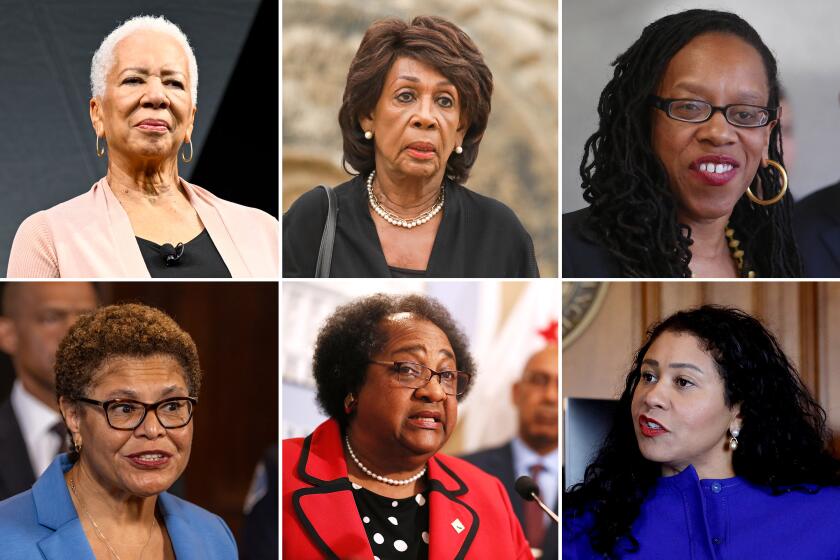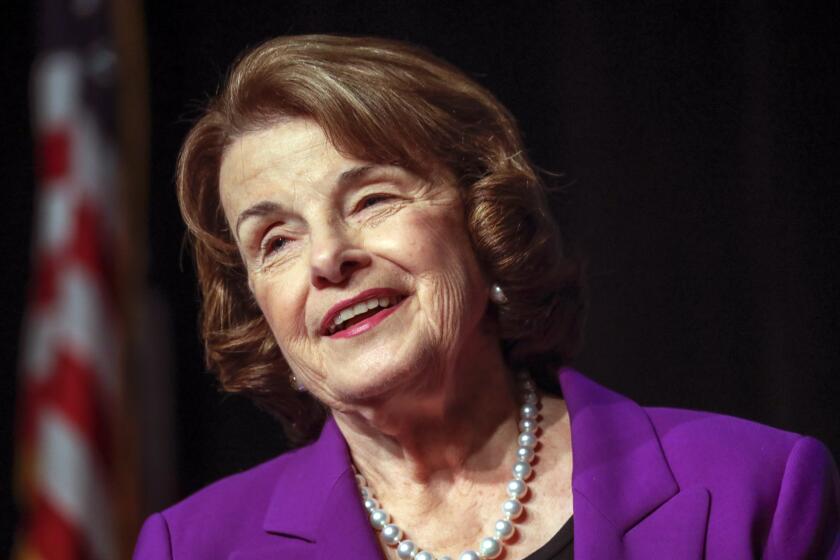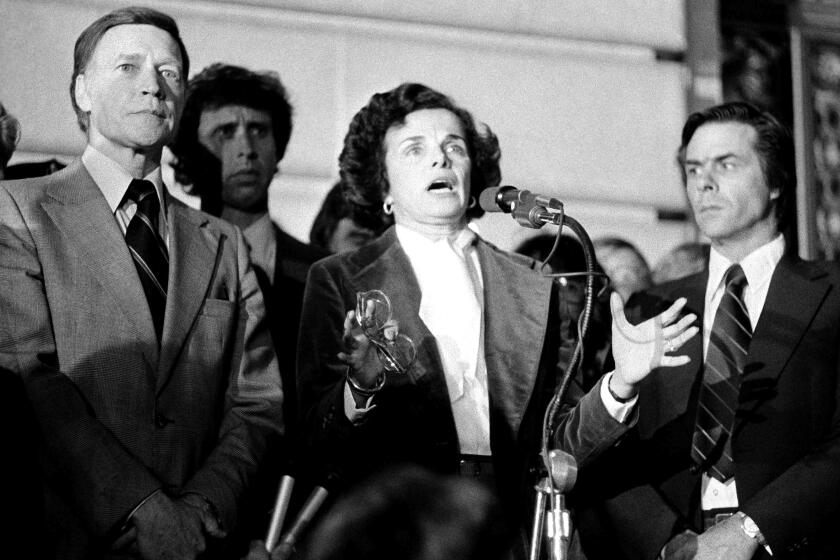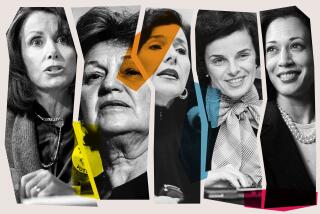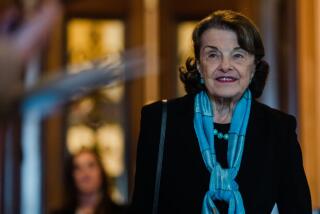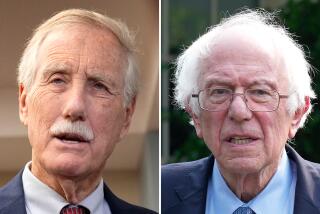Opinion: Dianne Feinstein — the most important woman in the modern history of California
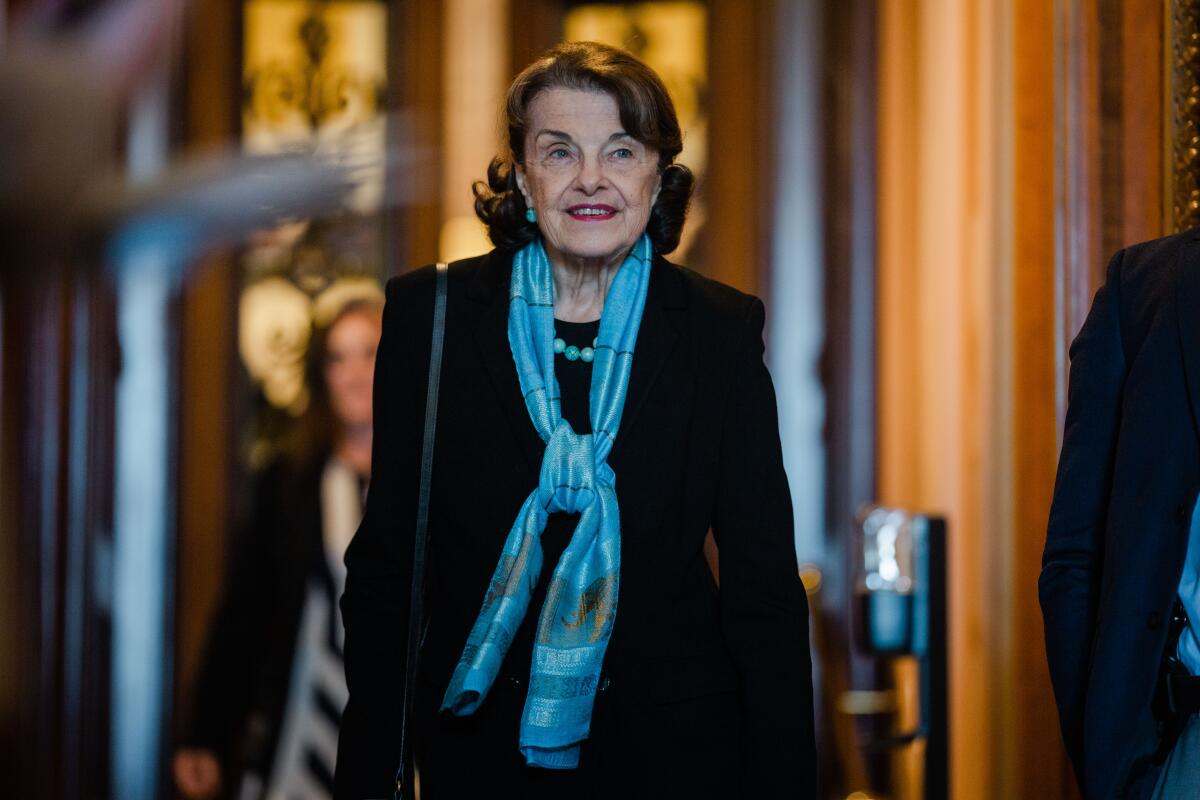
- Share via
Dianne Feinstein leaped into the lives of many Californians — including mine — in 1978, when she lost two colleagues by the hand of a third.
It was the morning of Nov. 27, and San Francisco was in the middle of a political scrum. Supervisor Dan White had recently resigned from office, only to reconsider and try to recover his position. George Moscone, the mayor, thought about appointing him, but was urged by more liberal members of the board of supervisors, especially Harvey Milk, to reject White’s request and instead seize the opportunity to fortify the board’s liberal majority.
Distraught, White sneaked into City Hall that morning, went to Moscone’s office, shot him dead, reloaded, walked across the hall and killed Milk.
Sen. Dianne Feinstein survived an assassination attempt and a mayoral recall to become the most popular politician in California for years running.
Feinstein, a member of the board, heard the shots from inside her office, rushed into the hall and smelled the gunpowder. White brushed by her, ignoring her as she asked what was happening. More shots. She then headed to Milk’s office and found him on the floor. She groped to find a pulse and her finger slipped inside a bullet hole. “There’s no mistaking dead,” she told me in 2019, when I interviewed her about those events for a biography of her friend, Gov. Jerry Brown.
The assassinations of a mayor and pioneering civil rights figure would have roiled any city, but they came especially hard for San Francisco that November. Just 10 days earlier, the Rev. Jim Jones, of San Francisco’s Peoples Temple, had ordered the deaths of more than 900 of his followers at a compound known as Jonestown in Guyana. The horror of that carnage rippled back through San Francisco, and when Moscone and Milk were killed, many assumed that their deaths were somehow related to the massacre.
I was one of them. I was a high school sophomore at the time, growing up in the Bay Area. After Jonestown, the reports of gunfire at San Francisco City Hall sent an already chaotic world over the edge. I can vividly remember the feeling that something was badly broken, maybe beyond repair. And then Dianne Feinstein stepped up.
With the death of Sen. Dianne Feinstein, Gov. Gavin Newsom now must decide who will fill her U.S. Senate seat until the next election.
Calmly addressing a shell-shocked group of reporters and news cameras at San Francisco City Hall, Feinstein looked rattled but spoke clearly as she announced the deaths of her colleagues and the stunning news that White was suspected of killing them.
Feinstein projected poise that day and in the days that followed. She restored order by force of her personality. She brought San Francisco through grief and back to solid footing. And she did all of that for me, too.
I had the chance to thank her for her leadership through that crisis when we spoke about those events and about Jerry Brown. She seemed a little taken aback to be thanked for her actions 41 years earlier, but she was gracious and appreciative, reserved, of course, but also moved, I think.
Political leaders in Washington and across the country recalled Sen. Dianne Feinstein as a trailblazer and an early voice for gun control.
Feinstein leaves a large political legacy, but for many Californians, her greater gift may be personal. She was a stable and continuing presence in this state’s life, part of its transition from its wacky place in the counterculture to its solid leadership of the nation’s thoughtful left. In that, she was joined by Brown, both of them committed to politics beyond conventional partisanship while also thoroughly committed to the Democratic Party.
They were different. Feinstein was part of a long tradition of reaching across the aisle while Brown was more likely to reach around it altogether. But they grew up together — both were born in San Francisco, and Feinstein went to school with Brown’s sister — and shaped modern California together.
Feinstein’s centrism sometimes left her outside the main current of California politics. She was a moderate in San Francisco, which does not have much use for moderates. Her willingness to court and advertise friendships with Republican colleagues was useful and helped make her effective, but it antagonized the more liberal elements of her party. As her health failed in recent months, she rebuffed liberal members of her party who urged her to step down.
How the assassinations of Harvey Milk and George Moscone helped shape the direction of retiring Sen. Dianne Feinstein’s political path.
Centrist, however, was who she was — ideologically, temperamentally and stubbornly. She sought compromise and order. She was the person who remained calm in a crisis, unmovable in a storm. She was the most important woman in the modern history of California, not because of any single legislative achievement but because she was recognizably solid, powerful and strong.
Her death creates an unusual opportunity for her friend and one of her successors as San Francisco mayor, Gov. Gavin Newsom, who now becomes the first governor since Earl Warren in the mid-20th century to have the opportunity to appoint both of the state’s senators. Newsom already filled the vacancy created by Kamala Harris becoming vice president with the Senate’s first Latino, Alex Padilla. Now he has promised to appoint a Black woman to finish Feinstein’s term.
Whomever he picks will have the unenviable task of following one of California’s greatest figures, a gifted politician and, perhaps most importantly, a leader who came to prominence in a crisis and guided her constituents to safety.
Jim Newton, a former columnist and editorial page editor of The Times, is editor of Blueprint magazine at UCLA and a regular contributor to CalMatters. He is at work on a book about Jerry Garcia, the Grateful Dead and San Francisco in the 1960s.
More to Read
A cure for the common opinion
Get thought-provoking perspectives with our weekly newsletter.
You may occasionally receive promotional content from the Los Angeles Times.
